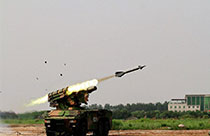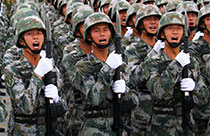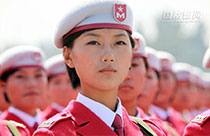

BEIJING, Sept. 6 -- Old Tibet was dark and backward as even in the 1950s, it was still a society ruled by feudal serfdom under theocracy, according to a white paper issued by the Chinese government Sunday.
Having existed for several centuries, this wretched system stifled human rights and destroyed human qualities, the white paper titled "Successful Practice of Regional Ethnic Autonomy in Tibet" said.
It was thus the most backward mode of human society under which the people had no democratic, economic, social, or cultural rights, and their basic human rights were not protected. Old Tibet was a far cry from modern civilization, according to the paper.
In old Tibet, the three major estate-holders and their agents accounted for only five percent of Tibet' s population, but they owned almost all of Tibet's farmland, pastures, forests, mountains, rivers, and beaches, as well as most of the livestock.
Serfs suffered three kinds of exploitations, including land rent, corvee labor - a broad term covering not only corvee, but taxes and levies, and rents for land and livestock, and usury.
Feudal serfdom under theocracy seriously obstructed social progress in Tibet. At the time of the peaceful liberation in 1951, there was almost no trace of modern industry, commerce, science and technology, education, culture, or health care, the paper said.
 'Enemy planes' intercepted by Hongqi-7B air-defense missiles
'Enemy planes' intercepted by Hongqi-7B air-defense missiles Blind date with bikini girls in Nanjing
Blind date with bikini girls in Nanjing Amazing photos of Chinese fighter jets
Amazing photos of Chinese fighter jets Chinese soldiers participate in training for V-Day parade
Chinese soldiers participate in training for V-Day parade Painting: Lonely women in Forbidden City
Painting: Lonely women in Forbidden City China and Russia hold joint drill in Sea of Japan
China and Russia hold joint drill in Sea of Japan 'Goddess' in Taiwan McDonald's
'Goddess' in Taiwan McDonald's Female soldiers at military parades
Female soldiers at military parades Photos of campus belle doing splits go viral
Photos of campus belle doing splits go viral Best blade forward
Best blade forward Infographic: Parsing China's massive V-day parade
Infographic: Parsing China's massive V-day parade Giant panda cub receives medical care in Guangzhou
Giant panda cub receives medical care in Guangzhou China celebrates 70th Anniversary of Victory of World Anti-Fascist War
China celebrates 70th Anniversary of Victory of World Anti-Fascist WarDay|Week